In conversation w/
Merlin Modulaw
MAY 21, 2025 → WORDS ADRIÁN GOMIS EXPÓSITO
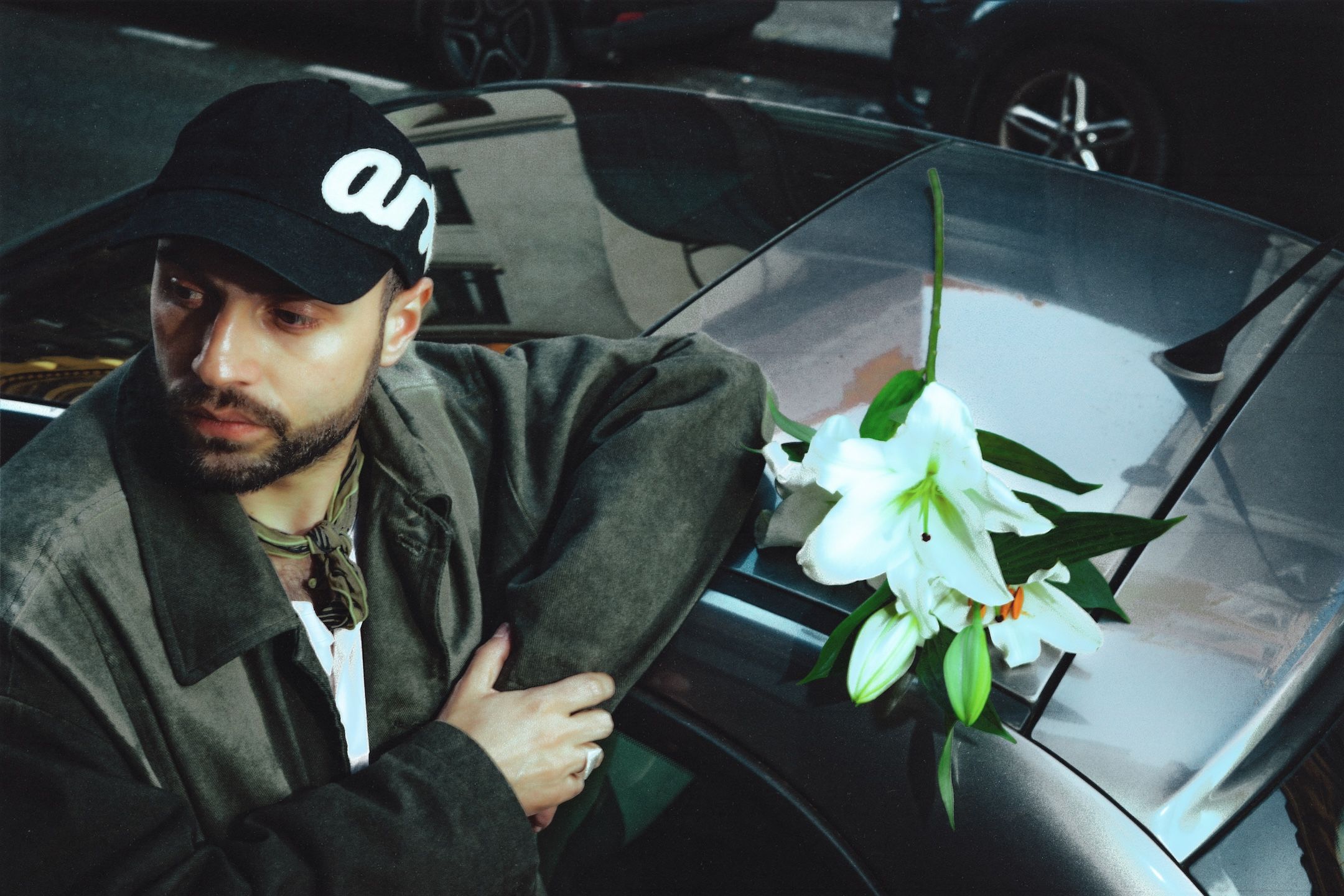
PHOTOGRAPHY JELENA LUISE POST-PRODUCTION JELENA LUISE, LATOYA HAGUINATHA BREU SPECIAL THANKS PLURAL ARTIST MANAGEMENT
In a saturated musical landscape, few artists dare to construct universes rather than simply release albums. Merlin Modulaw takes this challenge head-on with The Songweaver—a multidimensional project that transcends traditional formats. We spoke with the sonic architect about modular storytelling, immersive sound environments, and the emotional pulse that drives his genre-defying work.
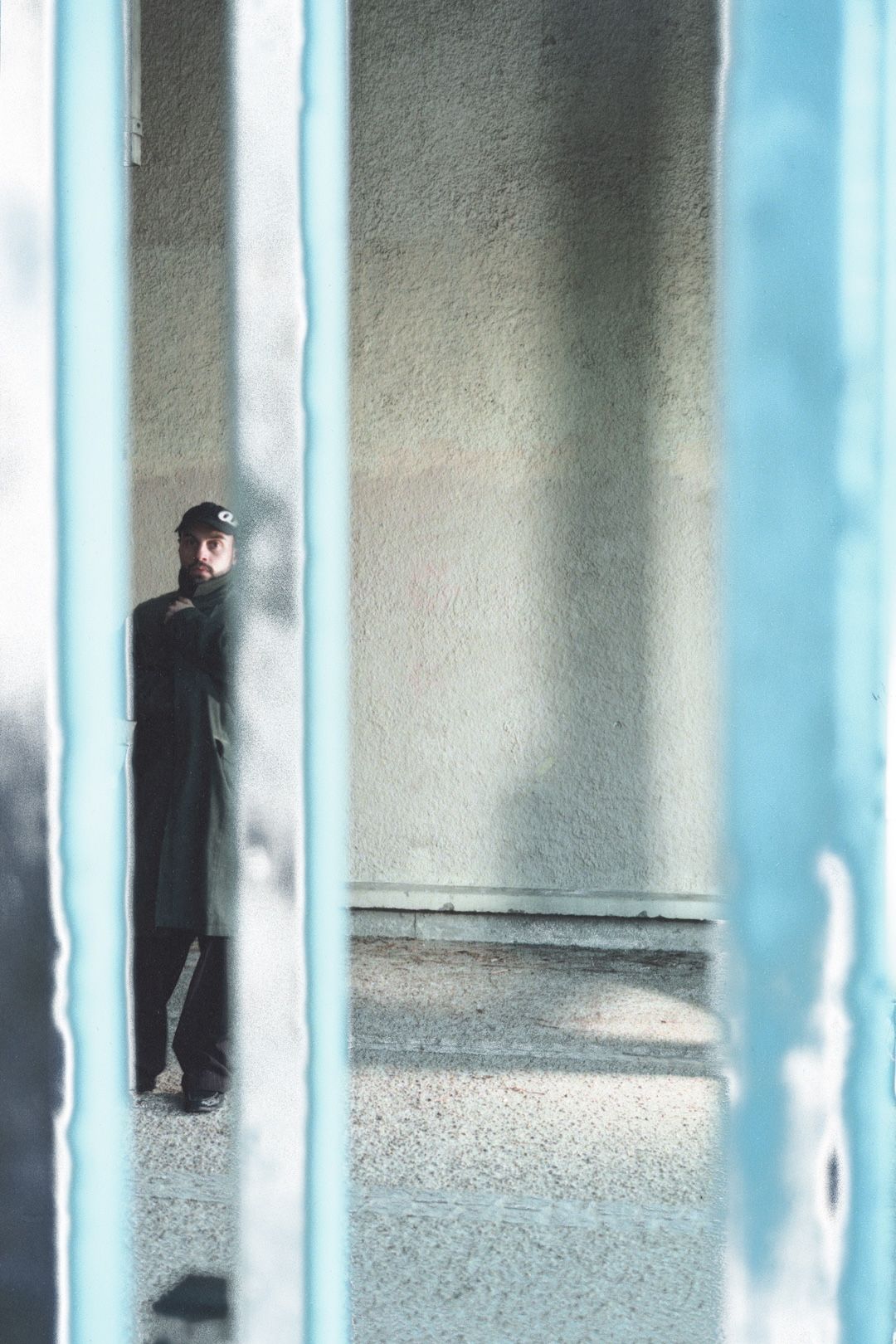
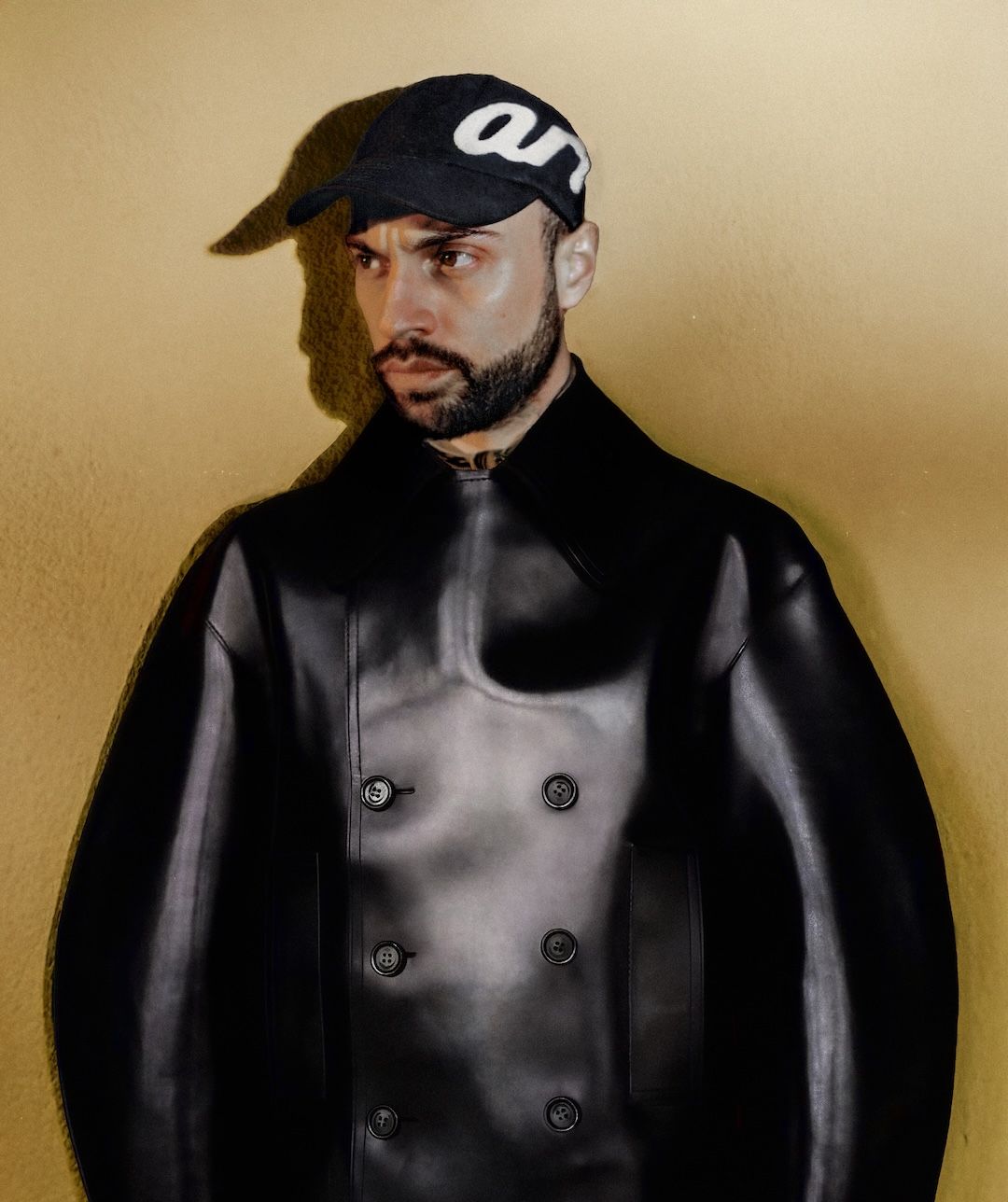
“The Songweaver” unfolds like an intricate tapestry of genres and moods. What was the first thread you pulled to begin weaving this album? Can you walk us through the core of your creative process?
The project began in January 2024, somewhat unexpectedly. I had to postpone a larger project due to logistical issues, which created a sudden space—mentally and temporally—to start something new. I wanted to create a body of work that felt closest to my personal vision of what music could be—not just as a set of finished tracks, but as an evolving, multidimensional world. I approached the album not as a final product but as one manifestation of a broader system of musical ideas, which could later take on different forms depending on the medium—be it performance, installation, or film. My creative process involved shaping and reshaping motifs across contexts, distilling their core essence and recontextualizing them. It was a way of composing across formats, with each version revealing something new about the material.
You’ve referred to yourself as a “sonic architect”. What does that identity truly embody for you, and how is it reflected in The Songweaver compared to your earlier projects?
For me, being a sonic architect means working with sound as a physical and symbolic material, shaping structures of memory, emotion, and narrative across time and space. It’s not just about composing music in the traditional sense, but about designing immersive environments where sound becomes the architecture itself. In The Songweaver, this manifests on several levels. There’s a structural dimension to the worldbuilding—songs unfold in different forms depending on the format, whether as an album track, a spatial installation, or a live performance. None of them are definitive; they’re modular, interconnected expressions of the same musical core.
Spatial dramaturgy plays a central role, especially in live performance. Sound moves through the room like a living character, guiding attention, shaping perception, and giving each element a distinct form or weight in space. Spatial movement becomes a way to assign physicality or association to a sound, to turn something abstract into something embodied.
It’s also about composing with distance and space as parameters—thinking not only in rhythm and harmony, but in how proximity, diffusion, and directionality affect emotional impact. At its core, The Songweaver is a more unified, multidimensional system than my previous work—where sound, image, structure, and reference are all interwoven into a living framework.
This album moves seamlessly through experimental textures, classical influences, and club-driven rhythms. How do you approach blending such diverse elements without losing a sense of cohesion?
I tend to think of music less in terms of genres and more as sculpting with sound. Each element—whether it’s a texture, rhythm, or motif—has its own shape, density, and movement. I work with these materials like a sculptor would with clay: stretching, layering, distorting, until something cohesive starts to emerge.
What ties the album together is this focus on in-between states—not just between abstraction and familiarity, but also between genres themselves. I’m drawn to those moments where something resembles a form without fully becoming it. A synthetic tone might hint at breath, metal, or birdsong without mimicking them exactly. A processed voice might act like a harmonic drone. Likewise, a rhythmic pattern might echo club structures or classical phrasing without committing to either. It’s about inhabiting those blurred zones where things overlap, mutate, and cross-inform each other.
So cohesion, for me, isn’t about uniformity—it’s about creating a sonic ecosystem where contrasts enhance each other. That balance between structure and ambiguity is what gives The Songweaver its internal logic.
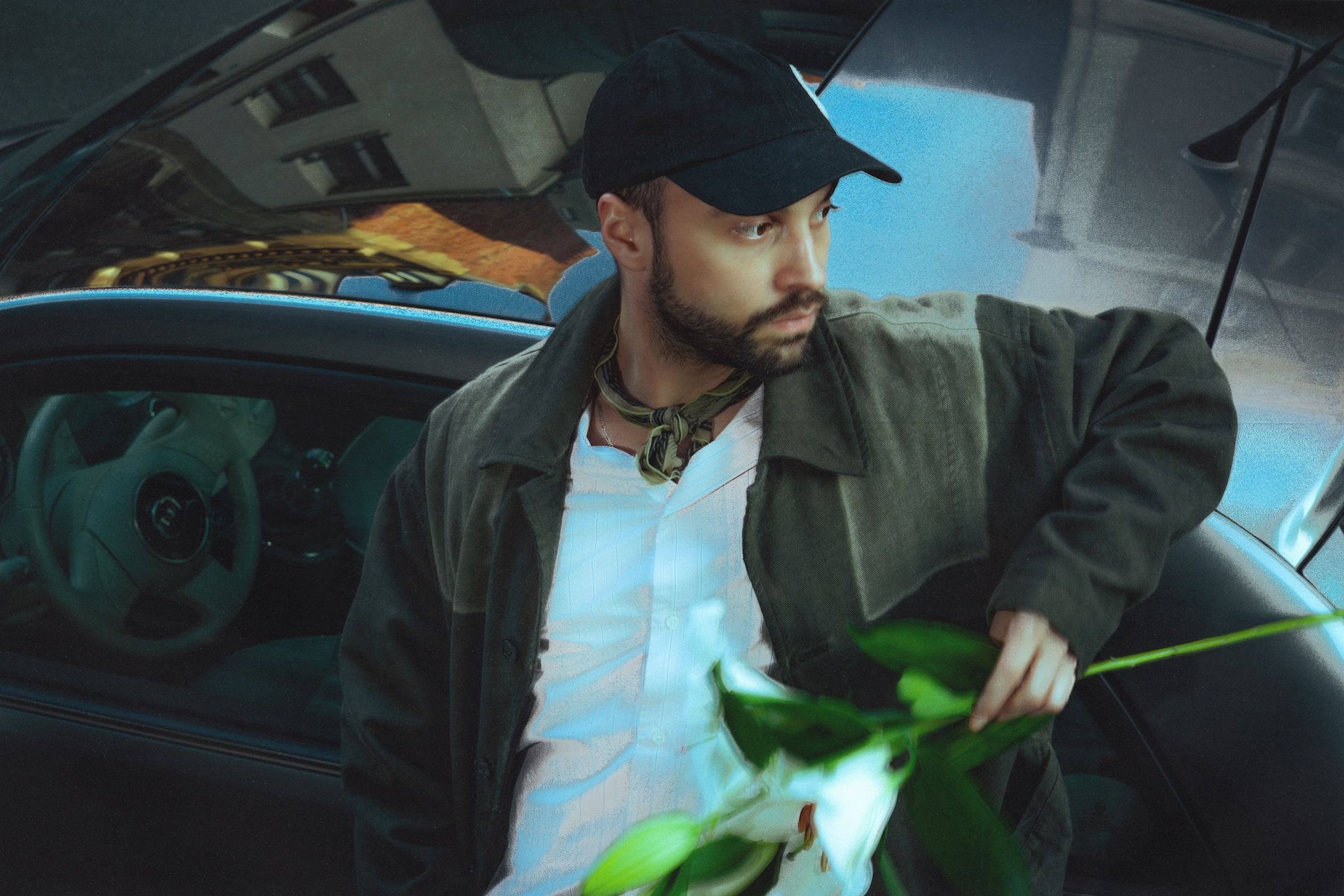
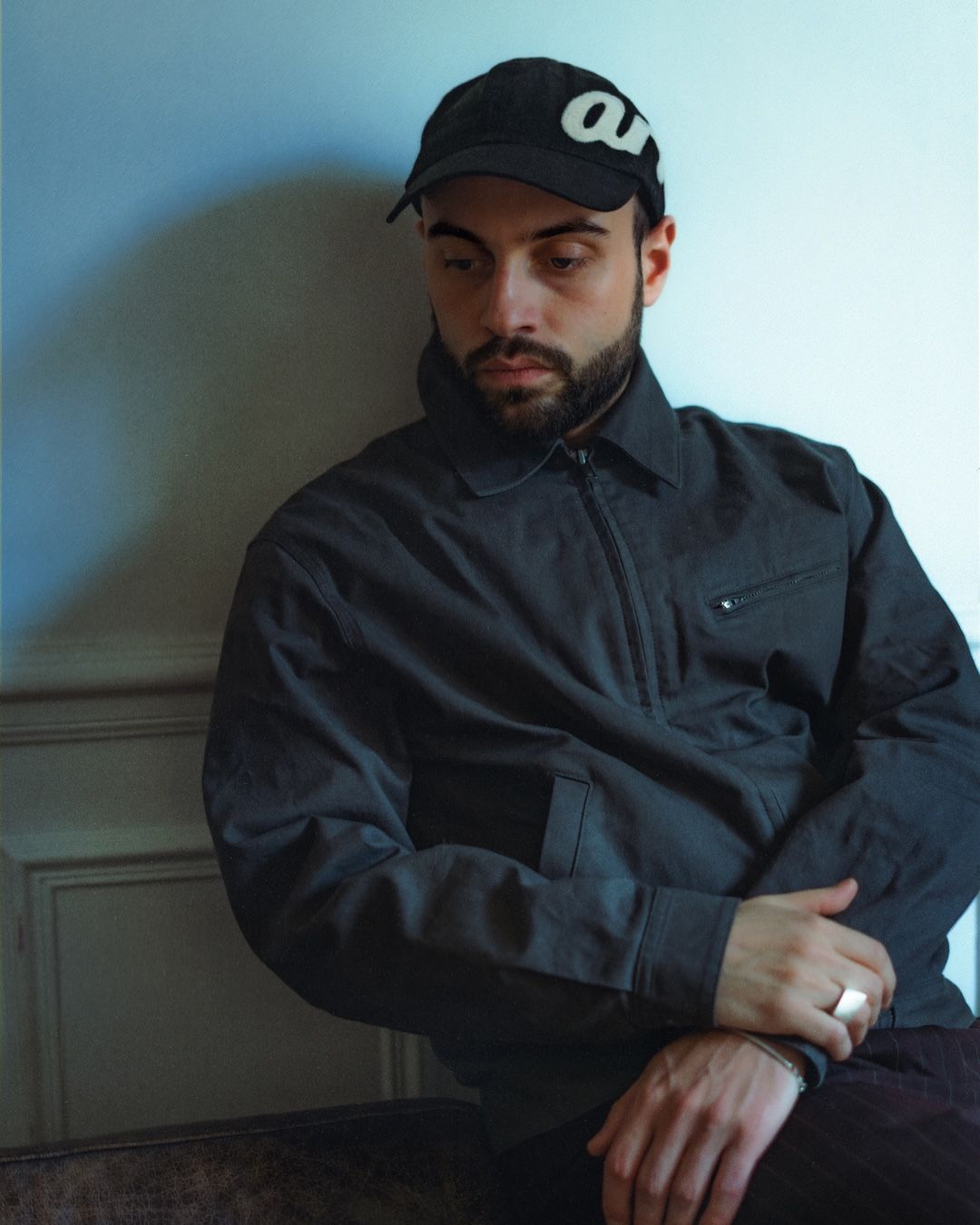
Storytelling feels central to your work. What kind of emotional journey or narrative arc did you aim to craft with The Songweaver?
The Songweaver traces a loose narrative arc that touches on transition, resilience, redemption, and love. It’s about being in motion—physically, emotionally, spiritually. I was interested in exploring the in-between states: places that aren’t quite one thing or another, moments that exist between clarity and confusion. Collaborating with different vocalists and writers helped me create a tapestry of voices that suggest a collective experience without forcing a singular storyline. The intention wasn’t to present a clear-cut narrative, but to trace an emotional current—one that unfolds gradually, across shifting textures and perspectives, inviting the listener to find their own thread within it.
Your list of collaborators spans continents and styles. Did any particular collaboration shape the direction of The Songweaver in a meaningful way? Are there any that feel especially personal or transformative?
Absolutely. Many of the collaborators on The Songweaver are artists I’ve had long-standing creative relationships with. Some of the material came from a larger pool of ideas we had developed over time—pieces that didn’t belong to a specific project initially, but revealed their potential in this context. It was less about writing to a brief and more about recognizing when something aligned with the emotional and sonic language of the album.
Collaboration, for me, is always about exchange and transformation. Some tracks only took shape through the perspective of the other person—through their voice, their interpretation, or their sense of timing. Letting someone else into the process often shifts the piece in ways I couldn’t have predicted, and that’s something I really value. The most meaningful moments came out of collaborations that weren’t limited to the studio—those that involved shared ideas, ongoing dialogue, and mutual trust. Those kinds of relationships helped shape The Songweaver as more than a collection of songs—they made it feel like a shared world being built collaboratively.
The title The Songweaver evokes a mythic or shamanic presence—almost like a keeper of sonic rituals. What does the figure of a ‘songweaver’ represent to you on a symbolic or personal level?
The Songweaver is a kind of storyteller—it’s someone who gathers fragments of memory, meaning, emotion, and transforms them into something coherent yet open-ended. The act of weaving is symbolic of my creative process: it’s not just about creating individual pieces of music, but about shaping a larger, interconnected web of relations, textures, and influences. Each thread represents a different element of my practice, from production to spatial sound design, and brings together seemingly disparate ideas into a cohesive whole.
Performance itself also carries a ritualistic quality: each iteration is unique, bound to a specific time and place. It’s less about creating a spectacle and more about creating a moment where sound, light, and movement converge—forming a transient experience, one that can only be fully experienced in that exact moment.
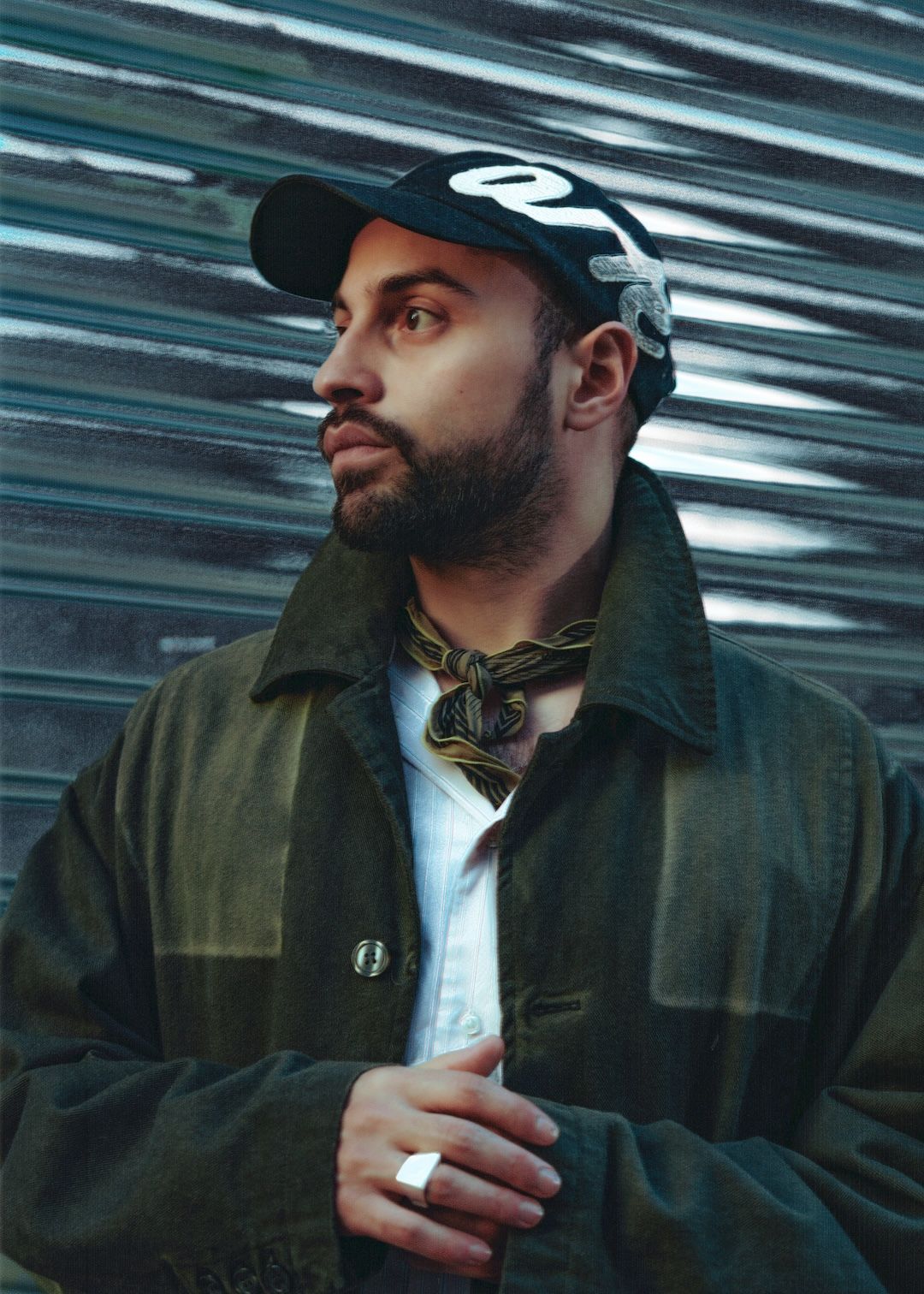
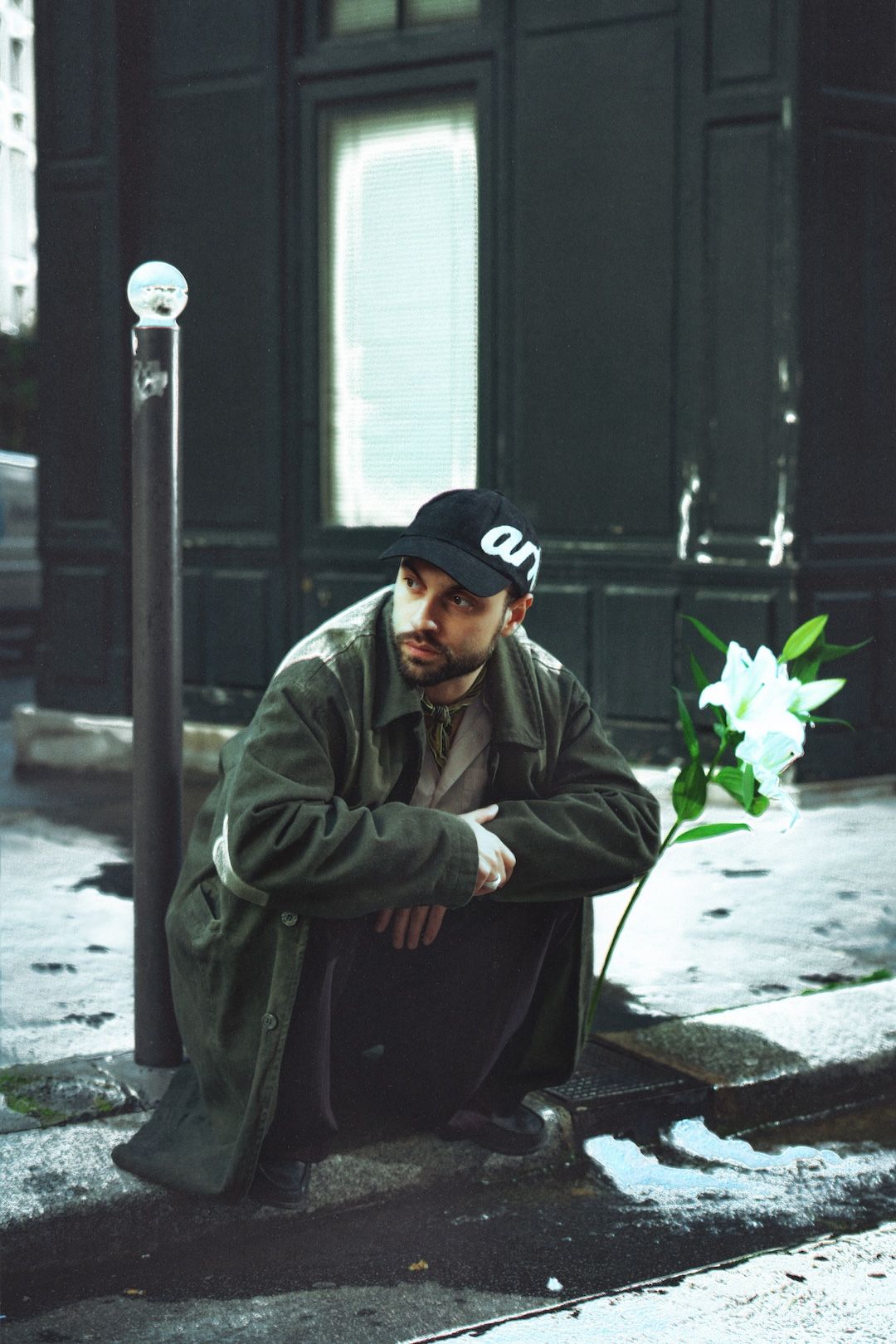
Your practice expands beyond music into video, print, and spatial audio. How do these other mediums help extend or deepen the world of The Songweaver? How do you navigate expressing yourself across such varied formats?
I see each medium as a different lens through which the same core ideas can be explored. Film is especially meaningful to me because it brings together so many disciplines—sound, image, narrative—and creates space for visceral, layered expressions of meaning. It allows me to shape emotion and atmosphere in a way that complements the music.
Spatial audio, on the other hand, introduces a compositional and dramaturgical dimension that goes beyond stereo. It gives sound movement, depth, and physical presence—turning listening into something immersive and embodied. It’s a way of giving sound shape, direction, even intention.
By translating a concept across mediums—whether that’s through moving image, live performance, or immersive sound—I discover new relationships within the material. It’s a way of continually unfolding the same world from different angles, where each iteration reveals something the others couldn’t. This fluid, cross-disciplinary approach allows The Songweaver to live beyond any single format, and invites different kinds of engagement depending on where and how it’s encountered.
You’ve brought your work to life in spaces ranging from underground clubs to contemporary art galleries. In your mind, what’s the ideal setting—or state—for experiencing The Songweaver at its most complete?
There’s no single perfect venue for The Songweaver, but it works best in spaces that allow for deep listening and a sense of immersion. I’m drawn to non-frontal settings—installations or performances where the audience isn’t just facing a stage, but surrounded, where sound can move around them and the experience becomes more circular, communal, less directional. That could be a gallery setup with multichannel audio and projection, or a warehouse with a carefully tuned system.
What matters most is that the space gives people the time and focus to step into another state—somewhere a bit slower, more open, where the layers of the piece can unfold gradually. The work is always attuned to the architecture it’s presented in; the shape of the room, the acoustics, the layout—they all influence how the piece unfolds. Each presentation becomes a slightly different version, shaped in dialogue with the environment and the people in it.
In an age overflowing with content and noise, what does it mean to weave sound in 2025? How do you stay connected to what feels meaningful, both to you and your audience?
For me, weaving sound today means taking the time to be intentional, both in how I make things and why. There’s so much out there, moving so fast, that it’s easy to lose touch with what actually matters. I try to go the other way: to slow down, pay attention to detail, and build things that feel grounded and long-lasting.
Lately, my work has become more multidisciplinary and physical. I’m drawn to formats where sound can interact with space, image, and performance—where it becomes part of a larger world you can actually step into. That kind of worldbuilding feels more meaningful to me than just releasing something into the void.
What keeps me connected is staying close to the emotional starting point—why I began making the piece in the first place. If something still feels honest or necessary after time has passed, I know it’s worth holding onto. I try not to chase trends or outcomes, but to follow that instinct and trust that if it resonates with me, it might resonate with others too.
In conversation w/ Merlin Modulaw
MAY 21, 2025
WORDS ADRIÁN GOMIS EXPÓSITO

PHOTOGRAPHY JELENA LUISE
POST-PRODUCTION JELENA LUISE, LATOYA HAGUINATHA BREU
SPECIAL THANKS PLURAL ARTIST MANAGEMENT
In a saturated musical landscape, few artists dare to construct universes rather than simply release albums. Merlin Modulaw takes this challenge head-on with The Songweaver—a multidimensional project that transcends traditional formats. We spoke with the sonic architect about modular storytelling, immersive sound environments, and the emotional pulse that drives his genre-defying work.


“The Songweaver” unfolds like an intricate tapestry of genres and moods. What was the first thread you pulled to begin weaving this album? Can you walk us through the core of your creative process?
The project began in January 2024, somewhat unexpectedly. I had to postpone a larger project due to logistical issues, which created a sudden space—mentally and temporally—to start something new. I wanted to create a body of work that felt closest to my personal vision of what music could be—not just as a set of finished tracks, but as an evolving, multidimensional world. I approached the album not as a final product but as one manifestation of a broader system of musical ideas, which could later take on different forms depending on the medium—be it performance, installation, or film. My creative process involved shaping and reshaping motifs across contexts, distilling their core essence and recontextualizing them. It was a way of composing across formats, with each version revealing something new about the material.
You’ve referred to yourself as a “sonic architect”. What does that identity truly embody for you, and how is it reflected in The Songweaver compared to your earlier projects?
For me, being a sonic architect means working with sound as a physical and symbolic material, shaping structures of memory, emotion, and narrative across time and space. It’s not just about composing music in the traditional sense, but about designing immersive environments where sound becomes the architecture itself. In The Songweaver, this manifests on several levels. There’s a structural dimension to the worldbuilding—songs unfold in different forms depending on the format, whether as an album track, a spatial installation, or a live performance. None of them are definitive; they’re modular, interconnected expressions of the same musical core.
Spatial dramaturgy plays a central role, especially in live performance. Sound moves through the room like a living character, guiding attention, shaping perception, and giving each element a distinct form or weight in space. Spatial movement becomes a way to assign physicality or association to a sound, to turn something abstract into something embodied.
It’s also about composing with distance and space as parameters—thinking not only in rhythm and harmony, but in how proximity, diffusion, and directionality affect emotional impact. At its core, The Songweaver is a more unified, multidimensional system than my previous work—where sound, image, structure, and reference are all interwoven into a living framework.
This album moves seamlessly through experimental textures, classical influences, and club-driven rhythms. How do you approach blending such diverse elements without losing a sense of cohesion?
I tend to think of music less in terms of genres and more as sculpting with sound. Each element—whether it’s a texture, rhythm, or motif—has its own shape, density, and movement. I work with these materials like a sculptor would with clay: stretching, layering, distorting, until something cohesive starts to emerge.
What ties the album together is this focus on in-between states—not just between abstraction and familiarity, but also between genres themselves. I’m drawn to those moments where something resembles a form without fully becoming it. A synthetic tone might hint at breath, metal, or birdsong without mimicking them exactly. A processed voice might act like a harmonic drone. Likewise, a rhythmic pattern might echo club structures or classical phrasing without committing to either. It’s about inhabiting those blurred zones where things overlap, mutate, and cross-inform each other.
So cohesion, for me, isn’t about uniformity—it’s about creating a sonic ecosystem where contrasts enhance each other. That balance between structure and ambiguity is what gives The Songweaver its internal logic.


Storytelling feels central to your work. What kind of emotional journey or narrative arc did you aim to craft with The Songweaver?
The Songweaver traces a loose narrative arc that touches on transition, resilience, redemption, and love. It’s about being in motion—physically, emotionally, spiritually. I was interested in exploring the in-between states: places that aren’t quite one thing or another, moments that exist between clarity and confusion. Collaborating with different vocalists and writers helped me create a tapestry of voices that suggest a collective experience without forcing a singular storyline. The intention wasn’t to present a clear-cut narrative, but to trace an emotional current—one that unfolds gradually, across shifting textures and perspectives, inviting the listener to find their own thread within it.
Your list of collaborators spans continents and styles. Did any particular collaboration shape the direction of The Songweaver in a meaningful way? Are there any that feel especially personal or transformative?
Absolutely. Many of the collaborators on The Songweaver are artists I’ve had long-standing creative relationships with. Some of the material came from a larger pool of ideas we had developed over time—pieces that didn’t belong to a specific project initially, but revealed their potential in this context. It was less about writing to a brief and more about recognizing when something aligned with the emotional and sonic language of the album.
Collaboration, for me, is always about exchange and transformation. Some tracks only took shape through the perspective of the other person—through their voice, their interpretation, or their sense of timing. Letting someone else into the process often shifts the piece in ways I couldn’t have predicted, and that’s something I really value. The most meaningful moments came out of collaborations that weren’t limited to the studio—those that involved shared ideas, ongoing dialogue, and mutual trust. Those kinds of relationships helped shape The Songweaver as more than a collection of songs—they made it feel like a shared world being built collaboratively.
The title The Songweaver evokes a mythic or shamanic presence—almost like a keeper of sonic rituals. What does the figure of a ‘songweaver’ represent to you on a symbolic or personal level?
The Songweaver is a kind of storyteller—it’s someone who gathers fragments of memory, meaning, emotion, and transforms them into something coherent yet open-ended. The act of weaving is symbolic of my creative process: it’s not just about creating individual pieces of music, but about shaping a larger, interconnected web of relations, textures, and influences. Each thread represents a different element of my practice, from production to spatial sound design, and brings together seemingly disparate ideas into a cohesive whole.
Performance itself also carries a ritualistic quality: each iteration is unique, bound to a specific time and place. It’s less about creating a spectacle and more about creating a moment where sound, light, and movement converge—forming a transient experience, one that can only be fully experienced in that exact moment.


Your practice expands beyond music into video, print, and spatial audio. How do these other mediums help extend or deepen the world of The Songweaver? How do you navigate expressing yourself across such varied formats?
I see each medium as a different lens through which the same core ideas can be explored. Film is especially meaningful to me because it brings together so many disciplines—sound, image, narrative—and creates space for visceral, layered expressions of meaning. It allows me to shape emotion and atmosphere in a way that complements the music.
Spatial audio, on the other hand, introduces a compositional and dramaturgical dimension that goes beyond stereo. It gives sound movement, depth, and physical presence—turning listening into something immersive and embodied. It’s a way of giving sound shape, direction, even intention.
By translating a concept across mediums—whether that’s through moving image, live performance, or immersive sound—I discover new relationships within the material. It’s a way of continually unfolding the same world from different angles, where each iteration reveals something the others couldn’t. This fluid, cross-disciplinary approach allows The Songweaver to live beyond any single format, and invites different kinds of engagement depending on where and how it’s encountered.
You’ve brought your work to life in spaces ranging from underground clubs to contemporary art galleries. In your mind, what’s the ideal setting—or state—for experiencing The Songweaver at its most complete?
There’s no single perfect venue for The Songweaver, but it works best in spaces that allow for deep listening and a sense of immersion. I’m drawn to non-frontal settings—installations or performances where the audience isn’t just facing a stage, but surrounded, where sound can move around them and the experience becomes more circular, communal, less directional. That could be a gallery setup with multichannel audio and projection, or a warehouse with a carefully tuned system.
What matters most is that the space gives people the time and focus to step into another state—somewhere a bit slower, more open, where the layers of the piece can unfold gradually. The work is always attuned to the architecture it’s presented in; the shape of the room, the acoustics, the layout—they all influence how the piece unfolds. Each presentation becomes a slightly different version, shaped in dialogue with the environment and the people in it.
In an age overflowing with content and noise, what does it mean to weave sound in 2025? How do you stay connected to what feels meaningful, both to you and your audience?
For me, weaving sound today means taking the time to be intentional, both in how I make things and why. There’s so much out there, moving so fast, that it’s easy to lose touch with what actually matters. I try to go the other way: to slow down, pay attention to detail, and build things that feel grounded and long-lasting.
Lately, my work has become more multidisciplinary and physical. I’m drawn to formats where sound can interact with space, image, and performance—where it becomes part of a larger world you can actually step into. That kind of worldbuilding feels more meaningful to me than just releasing something into the void.
What keeps me connected is staying close to the emotional starting point—why I began making the piece in the first place. If something still feels honest or necessary after time has passed, I know it’s worth holding onto. I try not to chase trends or outcomes, but to follow that instinct and trust that if it resonates with me, it might resonate with others too.